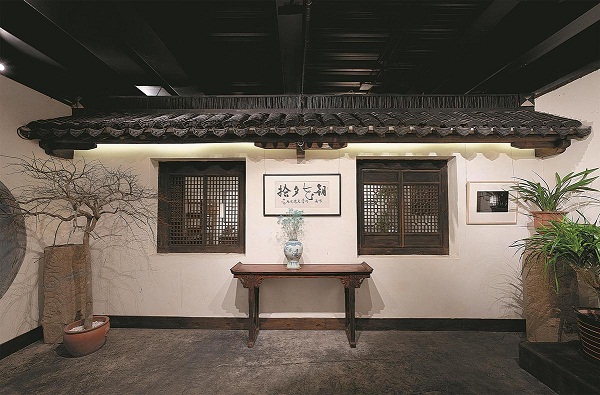 |
|
Traditional white walls with upturned eaves are seen in a room in the Ming Che Shan Fang garden in Shanghai. The room was renovated from a factory and divided into several sections by adopting such designs. GAO ERQIANG/CHINA DAILY |
"I designed the garden based on my understanding of Chinese art and aesthetic, including the placement of rocks or the location of gates or plants, without any design sketches"-Yin Hao, a Shanghai resident
In a complex combining shopping, dining and entertainment and located in the Jiading district west of Shanghai, a garden named Ming Che Shan Fang positions itself as a unique place to experience nature and tranquillity in the bustling center of a sprawling city.
Hidden at the end of a stone footpath winding its way through the trees, the garden covering around 1,000 square meters was designed and owned by Yin Hao, a Shanghai resident. It was used for bonding with friends through Chinese traditional paintings, calligraphy and antiques they are all interested in.
It's not as large as the famous Suzhou gardens, but it has the major elements to replicate nature in miniature in a classic Chinese garden. There are ponds, plants, rocks, and a building with upturned eaves.
The scenes unfold gradually in the garden, while one walks along the winding roads. Rocks block the view at the entrance so visitors don't see the whole scene at one glance which is a unique feature of a classic Chinese garden.
The Chinese garden can never be wholly observed from a certain point. A good design usually allows people to discover details step-by-step by walking inside.
"I designed the garden based on my understanding of Chinese art and aesthetic, including the placement of rocks or the location of gates or plants, without any design sketches,"Yin said.
Born in Nanxiang in the ancient town of Jiading, Yin grew up in a neighborhood next to Guyi Garden, which has a history dating back to the Ming Dynasty (1368-1644).

